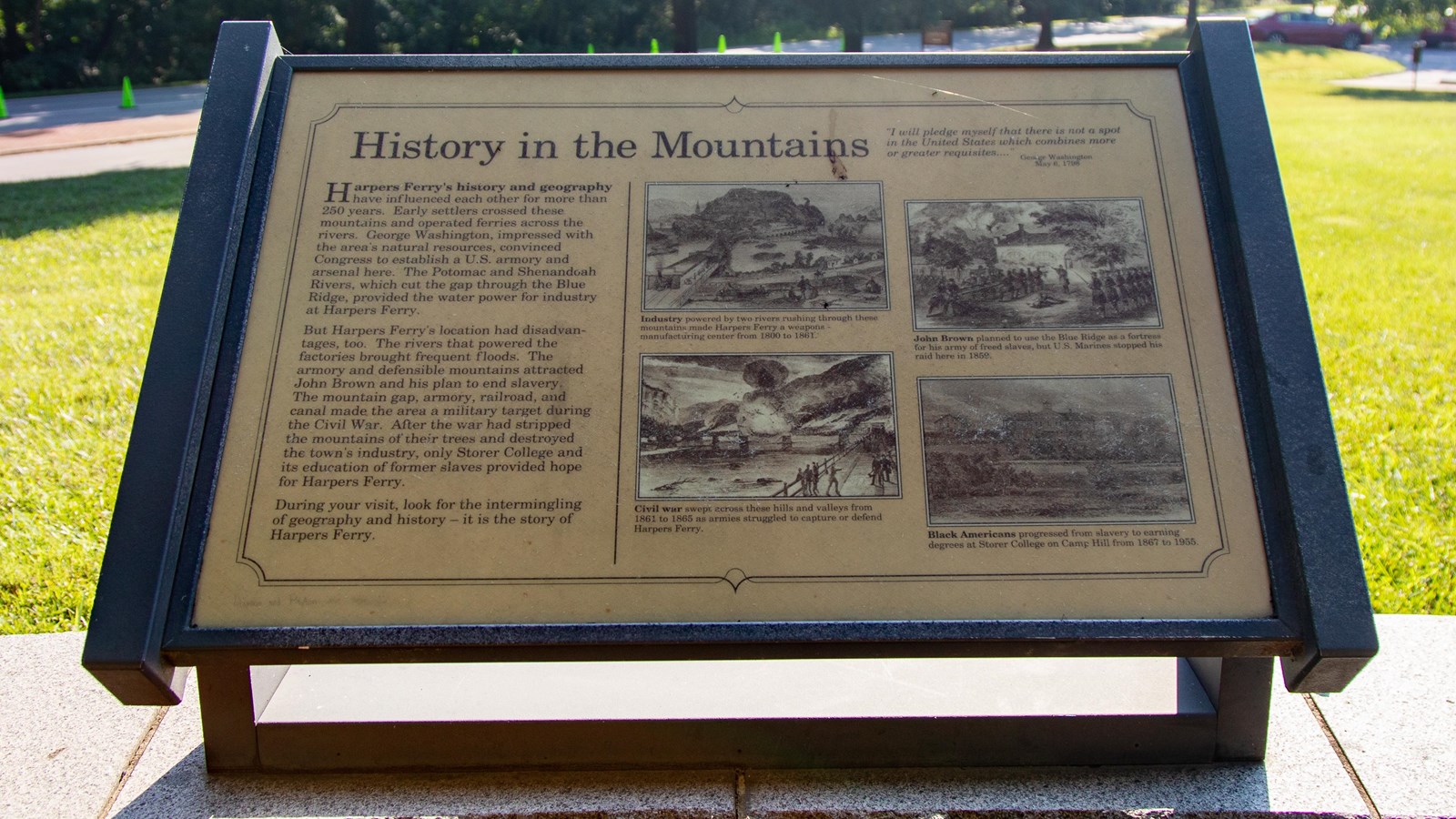Last updated: December 29, 2022
Place
Information Panel: History in the Mountains

NPS / Claire Hassler
Historical/Interpretive Information/Exhibits
Harpers Ferry's history and geography have influenced each other for more than 250 years. Early settlers crossed these mountains and operated ferries across the rivers. George Washington, impressed with the area's natural resources, convinced Congress to establish a U.S. armory and arsenal here. The Potomac and Shenandoah rivers, which cut the gap through the Blue Ridge, provided the water power for industry at Harpers Ferry.
But Harpers Ferry's location had disadvantages, too. The rivers that powered the factories brought frequent floods. The armory and defensible mountains attracted John Brown and his plan to end slavery. The mountain gap, armory, railroad, and canal made the area a military target during the Civil War. After the war had stripped the mountains of their trees and destroyed the town's industry, only Storer College and its education of former slaves provided hope for Harpers Ferry.
During your visit, look for the intermingling of geography and history - it is the story of Harpers Ferry.
Quotation: "I will pledge myself that there is not a spot in the United States which combines more or greater requisites . . . " George Washington May 6, 1798
Illustration Caption: Industry powered by two rivers rushing through these mountains made Harpers Ferry a weapons manufacturing center from 1800 to 1861
Illustration caption: John Brown planned to use the Blue Ridge as a fortress for his army of freed slaves, but U.S. Marines stopped his raid here in 1859.
Illustration caption: Civil war swept across these hills and valleys from 1861 to 1865 as armies struggled to capture or defend Harpers Ferry.
Illustration caption: Black Americans progressed from slavery to earning degrees at Storer College on Camp Hill from 1867 to 1955.
